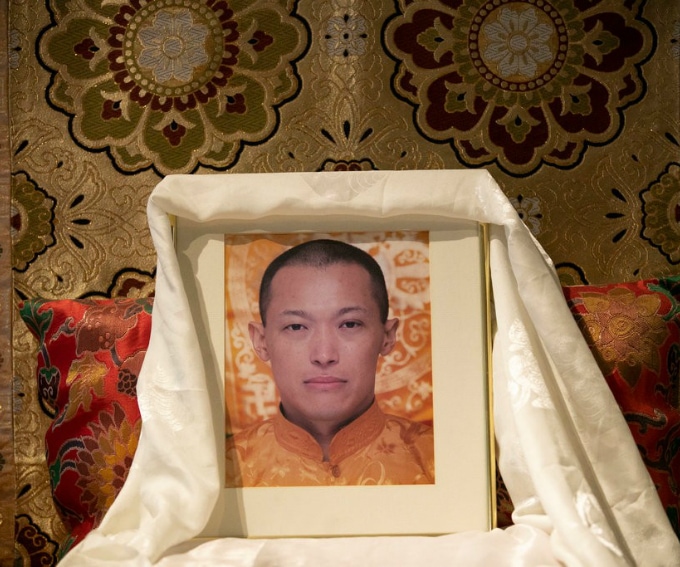KJIPUKTUK (Halifax) – Mum’s the word since we first heard allegations that Sakyong Mipham, the Halifax-based leader of Shambhala International, engaged in rape, sexual abuse, misogyny and plain old arrogance.
Even today, well over a year after the story broke, the face presented to the outside world, to people interested in meditation instruction and so on, is very much one of business as usual. Click here to buy Mipham’s wonderful books. Here is a program you can take. And don’t forget to check out Mipham’s YouTube channel.
I wrote about this code of silence, and its similarities with Shambhala’s stance when news broke that an earlier Shambhala leader, Ösel Tendzin, knowingly infected a young student with AIDS. That was in the days that a much younger me spent a lot of time at what was then Karma Dzong and is now the Shambhala Centre on Tower Road.
The questions I had then are still relevant today. How can you even begin to deal with these issues of abuse and arrogance, and recognize unhealthy structures of loyalty and devotion that allow such abuses to happen over and over, if for all intent and purposes you just want people to forget that such abuses ever happened?
Now an invitation to senior students to attend a Monarch retreat illustrates just how far the Shambhala organization continues to take this wilful ignorance. Although Mipham will not attend, his presence in spirit is central to the retreat.
The invite describes how the Monarch Retreat includes “receiving and practicing a heart transmission from His Majesty the Kongma Sakyong II (yet another title for Mipham) and a specially-designed Monarch Retreat shrine with a full portrait of the Sakyong.”
“In light of the disturbing events and conflicts in the mandala this year, it may seem surprising to be holding such a retreat at this time. Some might find it provocative. I recently attended this retreat at Dechen Chöling for my third time. There was a profound sense of tenderness and genuineness among the 22 participants as we each explored our deeply personal relationship with the lineage and with the Sakyong,” writes Cynthia MacKay, retreat host and Shambhala administrator.
All this before a Shambhala-sponsored report on the allegations is even published.
The invite to the retreat is published on a blog maintained by Matthew Remski, a Buddhist practitioner who is critical of Shambhala and similar hierarchical organizations.
In his post Remski also includes a response by Patricia J. Ullman, a former Shambhala administrator in the US. Ullman isn’t happy at all about the invite, and takes issue with its wording.
To Cynthia –
I am so sad and disturbed to receive this letter, in light of the abuse that has occurred and the many people who have been harmed. As you say in your last paragraph, “this retreat will not be for everyone” – obviously it is only for those who wish to continue excluding and ignoring those many who are finally speaking out against duplicity and revealing what many like yourself wish to ignore. Even when I thought I couldn’t be shocked any more, your letter is shocking and very disturbing, as well as unkind.
The ‘disturbing events and conflicts’ you allude to are actually sexual abuse and other forms of aggression, carelessness, unkindness, and greed. They are not ‘conflicts,’ and they have caused immeasurable suffering and harm not only to individuals but to Shambhala and to Buddhism in general. The continuing effort to cover it all over is part of the problem and perpetuates a ‘culture of blindness,’ a cultish allegiance and clinging to something that is full of holes, rotten from the inside. The teachings of wakefulness deserve better.
It seems that Shambhala has forgotten its sense of decency and courage and has lost its ability to feel shame. Shame on you for sending this letter, at this time. I don’t speak out very often but this is beyond the pale.
Patricia
With a special thanks to our generous donors who make publication of the Nova Scotia Advocate possible.
Subscribe to the Nova Scotia Advocate weekly digest and never miss an article again.





This example typifies the response to the litany of abuse-related issues that have shadowed this organization for over 30 years. There is a certain amount of hand-wringing, some people retreat and meditate, “profound tenderness and genuineness” is expressed – and then the issue is swept under the rug as expeditiously as possible.
Patricia Ullman is correct in saying, “The continuing effort to cover it all over is part of the problem and perpetuates a ‘culture of blindness,’ a cultish allegiance and clinging to something that is full of holes, rotten from the inside.”
Great harm has been done to countless vulnerable people, but the organization refuses to address the systemic reasons responsible for this, comprehensively reform itself, and purge and punish those responsible.
No reparation for the victims, no acknowledgment of the specific crimes = no reform. The rot will continue.
Not all Shambalha centers in the world, not all members, not all seniors, act as business as usual. My experience is different since I live in Europe and this is a ongoing topic here, which isn’t silenced at all. Maybe it’s easier for us, since practically none of our local teachers have been accused, but we tell all new comers about the situation.
The discussion about leaving the pictures on the walls was interesting, though… Some of the older students of Mipham got very emotional, saying: “you convict him already, nothing is proven yet!” while younger students would rather see a more remorsefull reaction on the situation and a better save than sorry approach of removing the pictures, until the report is out.
Some centers have changed some things drastically regarding the sakyongs. Some have done nothing indeed…. It’s a weird situation, and I feel in a limbo, waiting on the (USA) people with more power in the community to initiate changes.
The blade that cuts in this circumstance is the question, “How beneificial is the Guru System in a society such as ours?” That structure has been ported over from a different culture. And though the teachings have been so married to this path, I do not buy that it is absolute. Even if you were to hand out all the teachings, without restraint, they maintain their secrets, if not directly realized already. The worst that will happen is a lot of intellectual debate, and this occurs already. People who are qualified to teach, will be obvious in their ability to hold themselves upright, with a sovereign dignity balanced by humility. Even these people will and can be wrong. Look to Lingmincha of the Tibetan Bon tradition. I have been to several classes and received education on Dzogchen, Tantra, Sutra, Yidam and on and on. But I am only a level 2 Shambhalian. The Bon have relaxed their tyranny over the teachings, and yet maintain a Guru system non the less. I can see the difficulty for these teachers but they are adapting, and these American students who come and go, like myself, from my perspective, are benefiting.